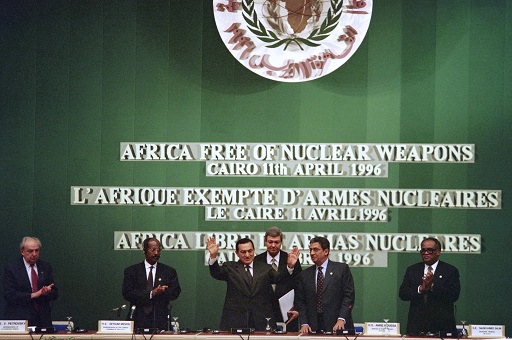2 Nuclear weapons free zones (NWFZ)
One central aim of anti-nuclear activism has been the creation of extensive nuclear weapons free zones. The idea is to establish a region, including several countries, in which the deployment, testing or use of nuclear weapons is prohibited. In 1967, governments from across Latin America and the Caribbean signed the Treaty of Tlatelolco, establishing a NWFZ stretching from the US-Mexican border to the southern tip of South America. The initiative was driven by Mexican diplomats, particularly Alfonso García Robles, a committed peace and anti-nuclear activist who received the Nobel Peace Prize in 1982 for his achievements. This was the first NWFZ covering inhabited territory, and it provided a model for future NWFZs around the world.
Activity 2
Click on the map below to see which parts of the world are nuclear weapons free zones.
African politicians and civil society have long played a leading role in the struggle against nuclear weapons. Initial activities focused on opposing French nuclear tests carried out in Algeria between 1960 and 1966, with nuclear fallout affecting communities in Algeria and neighbouring countries. In Session 2, you encountered the term ‘nuclear colonialism’. In Africa, activism against nuclear weapons was often closely related to the struggle for decolonisation and national independence. Similarly, opposition across Africa to the apartheid regime in South Africa increasingly involved opposition to the ‘apartheid bomb’, the nuclear weapons developed by the regime. South Africa was the only African country to develop nuclear weapons, and in 1989 the government in Pretoria decided to dismantle these weapons. In 1996, the Treaty of Pelindaba was signed, establishing a NWFZ covering the entirety of Africa. While the treaty was signed in Cairo, it took its name from the main site of the South African nuclear weapons programme, highlighting the historic denuclearisation of South Africa and the entire continent.

Since the signing of the Treaty of Pelindaba, African policymakers, activists and civil society have played a leading role in advocating nuclear disarmament, including the Treaty on the Prohibition of Nuclear Weapons (TPNW), which you’ll learn more about in Session 6.
